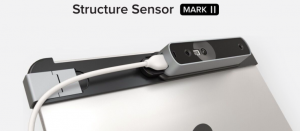Vigoride’s prototype flew to space a month ago, and it has two more test flights planned. Momentus hopes those demonstrations will help them line up two or three takers for their first real flight.
In its initial incarnation, Vigoride is a one-and-done machine: It will vigorously drive its customers wherever they want to go, and then, with its job complete, it will be done with its life. The company plans to make future tugs reusable, able to suck up more water when they get dehydrated (source TBD), and keep on trucking.
Another space-tug hopeful, a company called Atomos, is planning for that reusability, too. “We don’t want to launch our space tugs with customers,” says CEO Vanessa Clark, although they may do so at first. “We want to have a sustained presence in orbit.”
In other words, in mature form, Atomos will send a tug up solo. It will wait for its passengers, scoop them up, deliver them to their stop, and then wait for the next riders. Atomos, as its name alludes, plans to power its ever-circling vehicle with a nuclear reactor, starting in the mid-2020s. But with first launch happening, fingers crossed, around 2021, the tug will run on solar power.
With decoupled systems, though, there’s a wrinkle in spacetime: The tug has to snuggle up to the satellite and dock with it. If you’ve ever tried to hook up with something traveling 17,000 mph, or watched Interstellar, you have an idea of how hard docking can be. Especially because most satellites probably weren’t designed to dock with a nuclear-powered ferry.
But docking with things that were never meant for docking is potentially important to Atomos. Its tug could raise them to a higher orbit to help them live longer, or send them off on a different mission; it could also lower them down (with permission) so they don’t become space debris. Space tugs could more proactively deal with orbital litter, too: If engineers don’t have to make rockets that travel as high—because a tug can take care of the “last mile”—then their spent boosters will fall faster back to Earth.
Debris was top of mind for Spaceflight Industries, a company that arranges rocket rides for lots of satellite operators. Back in December 2018, they set up the SmallSat Express, which carried more than 60 little satellites to orbit on a SpaceX rocket. To release them all to the right place at the right time without causing a giant pile-up, the company built two deployment devices.
They were called “free flyers,” and they were based on the schematics of its own space tug, called Sherpa, but minus the propulsion. The satellites traveled up in the flyers, which detached from the rocket once they got to orbit. In a carefully orchestrated sequence, the free flyers set the satellites loose. “All of our customers were fine with the orbit we were going to,” says Jeff Roberts, Spaceflight’s mission director, so they could get away without using propulsion. When the show was over, big sails deployed from the free flyers and dragged them out of orbit so they didn’t add to the junk.
“The current state of the space tug is, you pay for the entire Uber car, you drive it to one spot, and then you throw it away.”
Jeff Roberts, Spaceflight Industries
From that launch and other rideshare work, Spaceflight has learned a few things: They probably won’t do another launch with as many satellites as the SmallSat Express. It was a lot of logistics. And according The Verge, people had trouble tracking their satellites and communicating with them, a worry Wired reported on at the time of launch. Roberts says the company will probably now stick to missions involving “no more than 20 to 30 satellites at a time.”



